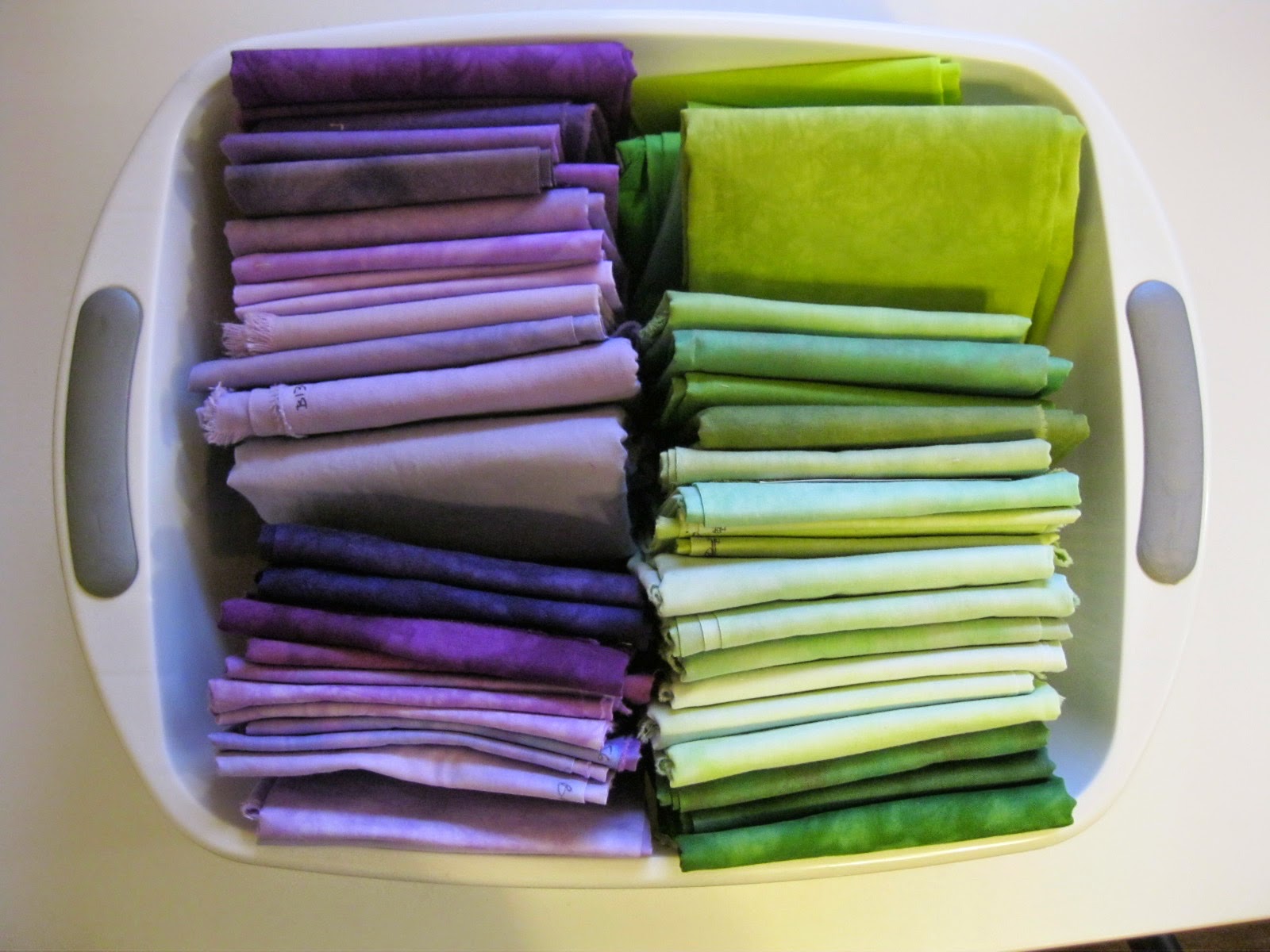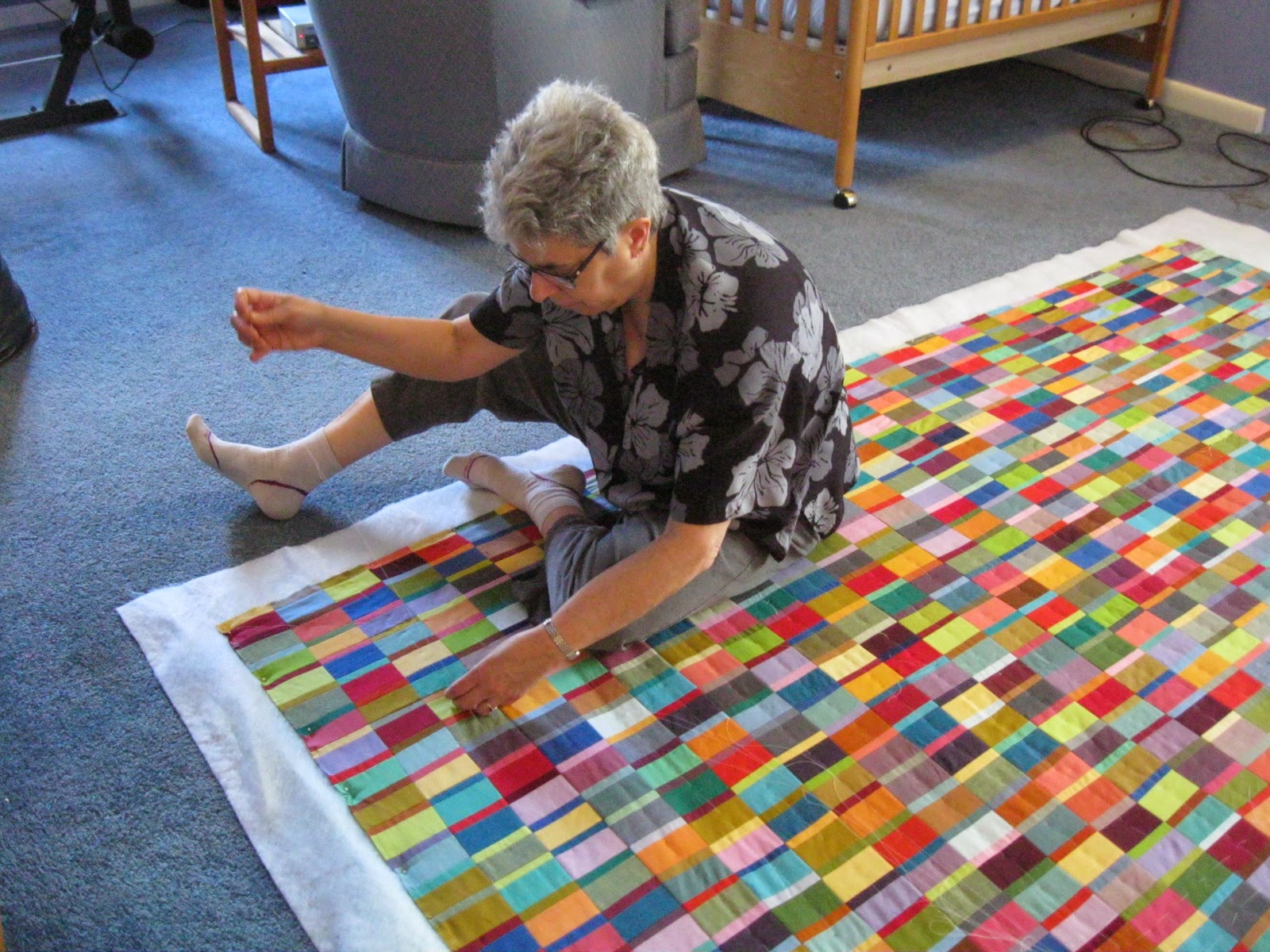
I recently finished up a version of Carol Friendlander's "Focal" pattern; my version above is 40 x 48". When using a pattern, I am relying on a designer for the basic composition of a quilt. Much as I enjoy designing my own quilts, I also enjoy taking a break, leaving the major compositional decisions to someone else. But it never ceases to amaze me how many design decisions still have to be made for a quilt, even when working from a pattern. In this way, I find it very different from the sewing and knitting I have done since I was a young girl. Yes, you have to choose the fabric or yarn for those, but that's basically one choice, and then you just follow the pattern. (I know it's possible to do significant adaptation/alteration of such patterns, but I never have.) With a quilt, even the choice of fabric is a whole set of choices, as a quilt typically contains at least two fabrics, and often many more than that. The huge range of choices available in today's quilting stores is very different from choosing the one color of, say, cordoroy, that I was going to use for a skirt. When I first started quilting, I found these choices daunting. I started reading in color theory to help me figure fabric choice; from there I went further into composition, drawing, graphic design, modern art history, and more--all of which has helped me gain confidence in making design choices as I make a quilt, including sometimes designing my own from start to finish.
About the decisions I made when using this pattern by Carol Friedlander: As always, the first choice was for fabrics. I decided to use my hand-dyed fabric for most of the quilt, just using commercial fabric for the little triangles. In an
earlier post (which includes a photo of Friedlander's pattern), I talked about how, while keeping the basic compositional design of the pattern, I fundamentally changed the construction process. But while the construction was different, the design remains Friedlander's, and I think it's brilliant!
Other than fabric, my big design choice was what quilting pattern to use for stitching the three layers together. I tried out various designs, and decided to go with a casual, angular floral design in the center section, and then straightline quilting in the border, outlining each "stick." Even that simple choice for the border came only after trying out several different possibilities on a sample piece.

The final choice was the binding. The binding is just 3/8" around the edge, but the right choice can really pull a quilt together. I auditioned various fabrics: aqua, orange, burgundy, and a scrappy sequences of 4" strips of fabrics used in the triangles. I thought the scrappy binding would likely be my choice, but it ended up competing with the triangles, rather than emphasizing them. In the end, I went with a dusky purple, and I think it does its work very well. I didn't have enough of one color for all four sides, and I wasn't in the mood to dye more, so I used one color for top and bottom and another for the two sides. Even though the fabrics looked quite different in the large, uncut pieces, with one both darker and with more red in it, you can barely tell the difference in this close up:
And really not at all when you step away and look at the whole quilt:
For the back, I ended up choosing to dye one piece of fabric, a mottled chartreuse.
Done!



















































